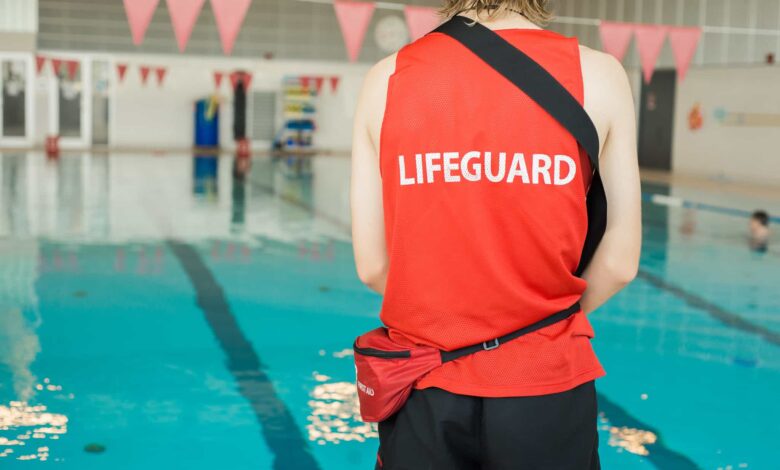The Responsibilities, Training, and Impact of Lifeguarding

Lifeguards stand as sentinels of safety in aquatic conditions, going from quiet pools to clamouring beaches. Their multifaceted responsibilities include proactive mishap anticipation, careful reconnaissance, swift emergency reaction, and compelling communication.
This article dives into the mind-boggling responsibilities of lifeguards, the thorough training they go through, and the significant effect they have on guaranteeing the prosperity of people in aquatic settings.
The Cautious Guardians: Guaranteeing Safety through Vigilance
At the centre of a lifeguard’s duties lies the steadfast cautiousness they keep up with over their assigned region. With extremely observant concentration, they ceaselessly check the water and environmental elements, adroit at spotting even the subtlest indications of misery or possible risks. This sharp perception fills in as a preplanned measure, permitting lifeguards to mediate swiftly and deflect mishaps before they unfurl.
Enforcing Safety Principles: Maintaining Rules for Well-being
One more significant part of a lifeguard’s job is the implementation of safety norms and regulations inside the aquatic facility. They are entrusted with guaranteeing that supporters comply with laid out rules, abstaining from diving in shallow waters, shunning running on tricky surfaces, and using proper buoyancy gadgets when vital. By maintaining these principles, lifeguards establish a more secure climate helpful for sporting enjoyment.
Swift Reaction to Emergencies: A Lifeguard’s Emergency Expertise
In the midst of an emergency, lifeguards arise as capable emergency managers, ready to answer unequivocally to emergencies. Whether it includes saving bothered swimmers, directing first aid, or starting emergency conventions, lifeguards showcase their training and expertise. Their capacity to keep calm under tension and execute exact rescue procedures is instrumental in safeguarding lives and limiting the effect of unexpected episodes.
Proactive Measures: Alleviating Dangers through Precautionary Action
Past reactive emergency reaction, lifeguards additionally participate in proactive measures pointed toward relieving possible dangers. This proactive approach incorporates ordinary safety evaluations of gear, guaranteeing clear and noticeable signage all through the facility, and tending to any arising perils quickly. By identifying and rectifying potential perils proactively, lifeguards contribute significantly to mishap avoidance and chance decrease.
Cooperative Endeavors and Viable Communication: Encouraging a Unified Safety Front
Viable communication and coordinated effort are essential skills in a lifeguard’s tool stash. They should convey safety rules plainly to supporters, answer quickly to requests or concerns, and team up seamlessly with individual lifeguards and facility staff. This cooperative ethos encourages a unified front devoted to guaranteeing the safety and prosperity of all people inside the aquatic climate.
Constant Learning and Certification: The Lifelong Journey of Lifeguard Training
Lifeguard training is definitely not a one-time occasion but rather a constant journey of mastering and skill refinement. Lifeguards go through thorough training programs that incorporate a different cluster of subjects, including water rescue methods, cardiopulmonary revival (CPR), first aid methodology, emergency reaction conventions, and hazard-the-board systems. These thorough training programs outfit lifeguards with the knowledge, skills, and certainty expected to explore testing circumstances.
The Significance of Lifeguard Certification: An Image of Capability and Preparedness
Lifeguard certification fills in as a demonstration of a singular’s capability, status, and obligation to greatness in lifeguarding. Managers ordinarily expect lifeguards to acquire certification from reputable associations like the American Lifeguard Association (ALA). Certification signifies that lifeguards have effectively finished thorough training, exhibited capability in essential skills, and are ready to maintain safety norms with professionalism and commitment.
The Effect of Lifeguards: Maintaining Safety and Advancing Great being
Basically, lifeguards play a vital part in maintaining safety guidelines, forestalling mishaps, and protecting lives inside aquatic conditions. Their devotion, training, and watchfulness contribute significantly to making a protected and charming experience for people, everything being equal.
Lifeguard certification from associations like the American Lifeguard Association approves lifeguards’ expertise as well as highlights their obligation to shield the prosperity of others.
Final Word: Lifeguards – The Guardians of Aquatic Safety
In conclusion, the responsibilities of lifeguards stretch out a long way past simple reconnaissance; they are the guardians of aquatic safety, encapsulating readiness, watchfulness, and professionalism. Through constant training, proactive measures, compelling communication, and swift emergency reactions, lifeguards maintain a norm of greatness that is irreplaceable in aquatic conditions.
Their effect reverberates in the confirmation of safety, the anticipation of mishaps, and the advancement of prosperity, making them important assets to any aquatic facility or community.
